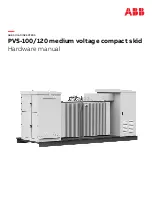
Crystal Vision
Aspect Ratio Correction
6 Aspect Ratio Correction
All UP-DOWN-VF models offer Aspect Ratio Correction (ARC) for the following input–output
configurations: SD-SD, SD-HD, HD-SD. UP-DOWN-VF models
ATX and ATXS
also offer
HD-
HD aspect ratio correction when the input and output format are the same.
6.1 Why Aspect Ratio Correct?
There are two broadcast aspect ratios 4:3 and 16:9. An image correctly shaped for 4:3 will
appear horizontally stretched on a 16:9 display. Similarly, a 16:9 image will appear vertically
stretched on a 4:3 display. To correct these distortions requires either a part of the image or
part of the display area to be lost.
For instance, a 4:3 image will be displayed on a 16:9 monitor would look like this:
And a 16:9 image would look like this on a 4:3 monitor:
UP-DOWN-VF aspect ratio correction manipulates the size and shape of the picture to offer
the best trade-off between image distortion and loss of image at edges.
525 line SD sources should always have an aspect ratio of 4:3 whereas 625 line SD sources
can be 4:3 or 16:9. All HD signals should have an aspect ratio of 16:9 although they may not
have originated in that format as they may have been up converted from a 4:3 SD source.
UP-DOWN-VF enables the aspect ratio of SD and HD sources to be corrected to the up or
down converted output format.
Aspect ratio correction is independently controlled for all four modes of operation and is
automatically applied to the active input-output configuration – as indicated by the ‘Output
Aspect Ratio’ display in the Video Status menu. The active configuration is the one that is up
or down converting i.e. an SD input converted to SD and HD will only be aspect ratio
corrected on the up converted HD output. Similarly, an HD input converted to HD and SD will
only be aspect ratio converted at the down converted SD output. If both outputs are set to
either SD or HD then both outputs will be identically aspect ratio corrected.
6.2 Fixed Aspect Ratios
There are four selectable fixed aspect ratio types which are: Anamorphic, Letterbox (14:9,
16:9) Pillarbox (4:3, 14:9) and Stretch. Anamorphic correction will map the input picture
directly to the native aspect ratio of the viewing display along with the resulting distortion
associated with this. Should it be necessary to view the output on a 4:3 display, setting the
aspect ratio selection to Letterbox will give the correct picture dimensions by adding black
UP-DOWN-VF User Manual R1.1
44
23 June 2017
















































